Mahaffie Stagecoach Stop and Farm
Introduction
Text-to-speech Audio
Images
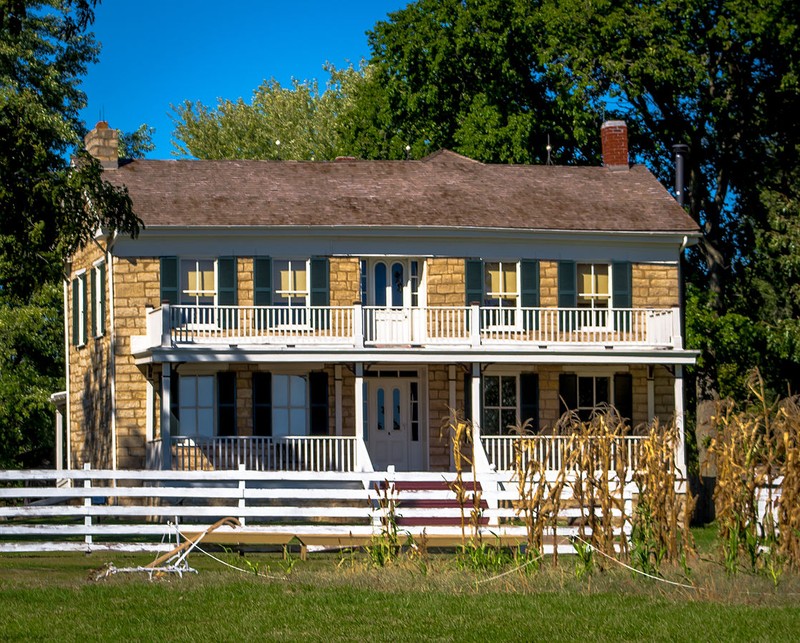
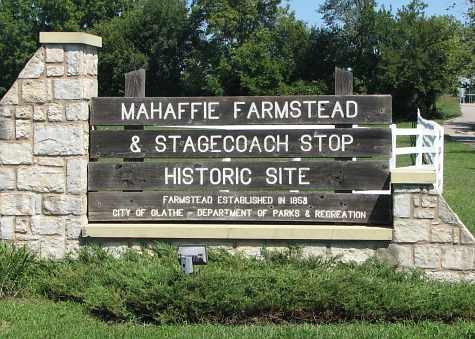
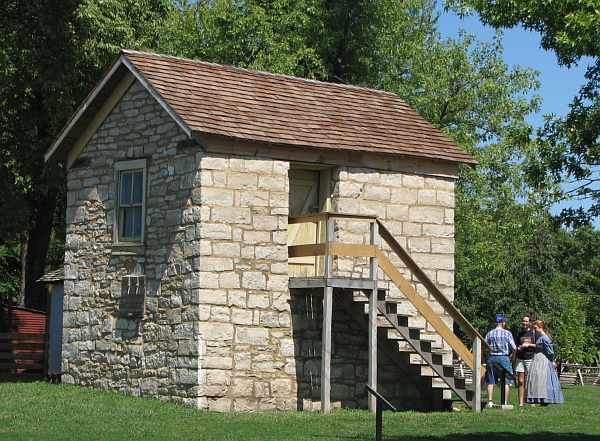
James and Lucinda Mahaffie
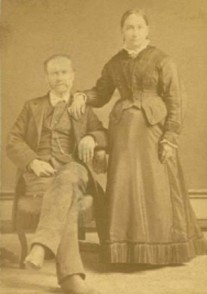


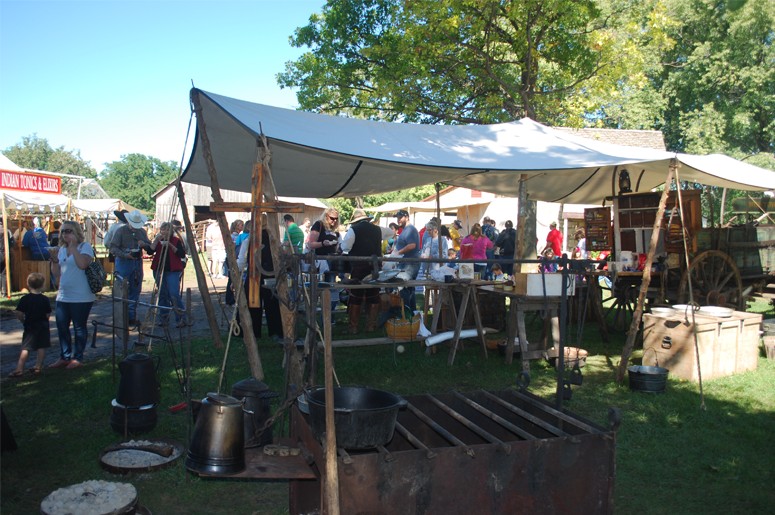
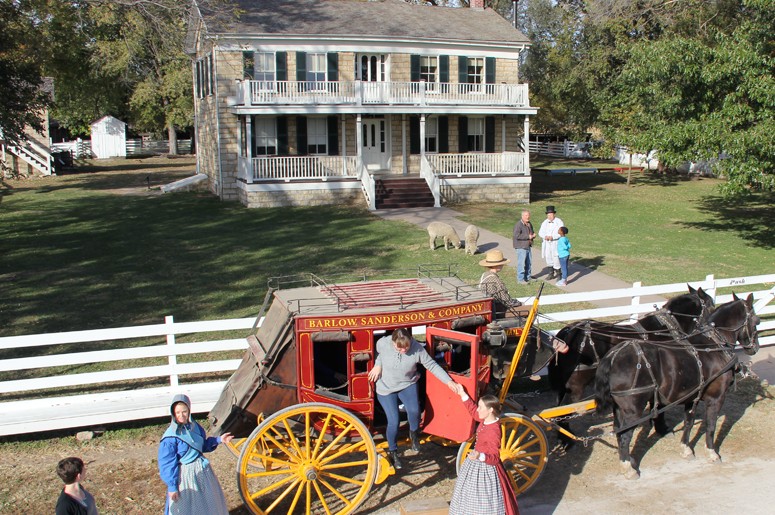
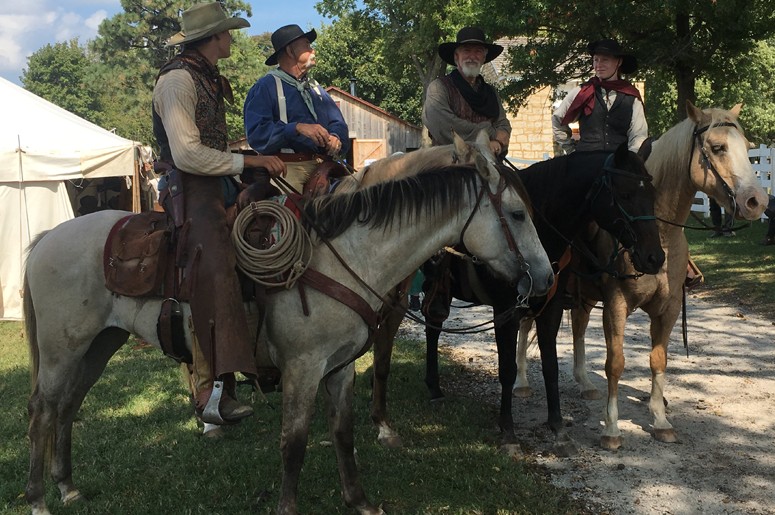
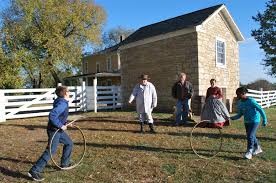
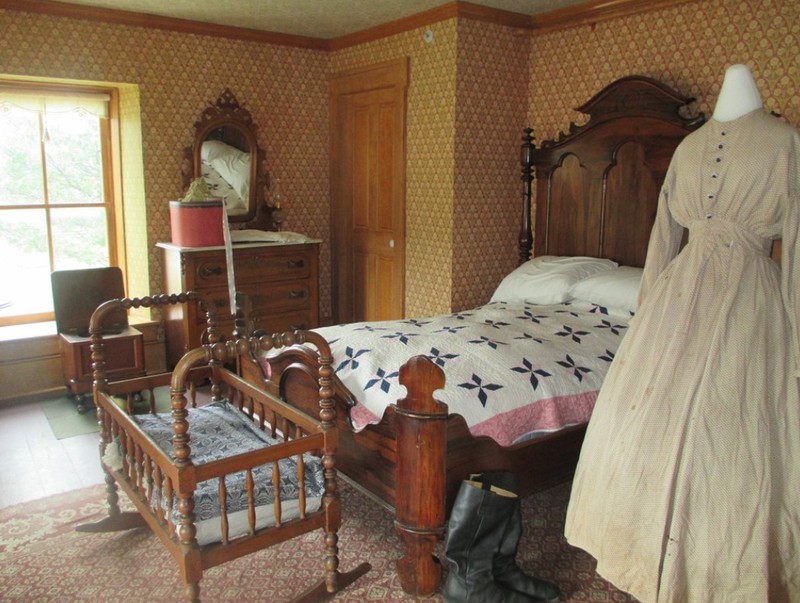
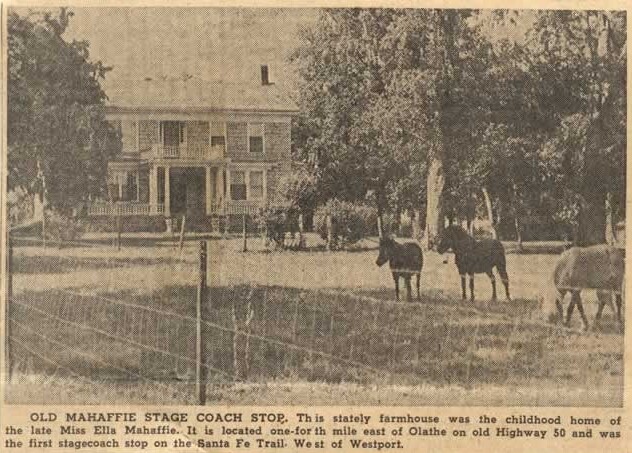
Backstory and Context
Text-to-speech Audio
The history of the farm begins with the arrival of James and Lucinda Mahaffie in 1857.1 The site originally held a wooden frame house that the Mahaffies had moved from downtown Olathe. Later, a limestone farmhouse was constructed in its place. The Mahaffies and their eight children worked the farm, which eventually grew to 340 acres. The home, a two-story limestone icehouse, and a barn (constructed using wooden pegs instead of nails) still stand today.2
Within just a few years of buying the land, the Mahaffies started hosting travelers and a stagecoach stop along the Westport Route of the Santa Fe Trail. Travelers on the Barlow, Sanderson and Company Stagecoach Line took meals in the large basement of the new stone home. The meals were cooked by Lucinda herself, as well as her daughters and hired servants. By 1867, the family were serving between 50-100 meals a day. The farm also provided a supplies store, a campsite for covered wagons, and livery service, where the stagecoach could hitch up fresh horses while travelers ate.1,3
Stagecoach operations eventually ended in the 1870s with the arrival of the railroad. However, the family and their farm remained prosperous. James Mahaffie invested in the railroad and served on the board of what would become the railroad company. In 1886, James and Lucinda moved back to Olathe town to live out their senior years.1
Today, 20 acres of the original farm and stagecoach stop are listed on the National Register of Historic Places, as well as a part of the Santa Fe National Historic Trail.1 The site is maintained by Olathe’s Parks and Recreation Department, which operates tours and events year-round. Visitors to the site today can view agricultural tools and live animals that would have been seen on the original farm, as well as learn more about daily tasks such as threshing and harvesting. Stagecoach rides run throughout the year. Living history programs include Civil War reenactments, Blacksmithing and cooking demonstrations, and children’s games and chores. One of the largest events hosted at the site is the Wild West Days, featuring live entertainment, cookoffs, dancing, and cowboy encampments, in addition to the usual living history activities. The Heritage Center building also acts as a rental venue for weddings and other special events.4
Sources
1. “About Us: A Brief History.” Mahaffie Stagecoach Stop and Farm Historic Site. Accessed 26 September 2019. https://www.mahaffie.org/about-us.
2. “J. B. Mahaffie House (1865).” ALBUM Newsletter of the Johnson County Museum, Vol. XVII #2, Spring 2004. Accessed 26 September 2019. https://jcprd.com/DocumentCenter/View/2310/Mahaffie-House?bidId=.
3. Scott, Sage. “Take a Ride on the Santa Fe Trail at the Mahaffie Stagecoach Stop in Olathe, Kansas.” 17 July 2019. Accessed 26 September 2019. https://everydaywanderer.com/mahaffie-stagecoach-stop.
4. “Programs.” Mahaffie Stagecoach Stop and Farm Historic Site. Accessed 26 September 2019. https://www.mahaffie.org/programs.
https://en.wikipedia.org/wiki/Mahaffie_House#/media/File:1100_Kansas_City_Rd.,_Olathe,_KS_J.B._Mahaffie_House.jpg
http://www.kansastravel.org/olathe/mahaffiestagecoachstop.htm
http://www.kansastravel.org/olathe/mahaffiestagecoachstop.htm
https://www.kansassampler.org/8wonders/historyresults.php?id=290
https://www.mahaffie.org/about-us
https://www.mahaffie.org/about-us/agricultural-heritage-barn
https://www.mahaffie.org/programs/wild-west-days
https://www.mahaffie.org/visit/schedule-of-activities
https://www.mahaffie.org/programs/wild-west-days
https://www.mahaffie.org/visit/schedule-of-activities
https://www.tripadvisor.com/Attraction_Review-g38954-d534157-Reviews-Mahaffie_Stagecoach_Stop_Farm_Historic_Site-Olathe_Kansas.html#photos;aggregationId=&albumid=101&filter=7
http://mahaffie.blogspot.com/2004/11/look-back-at-family-history.html
